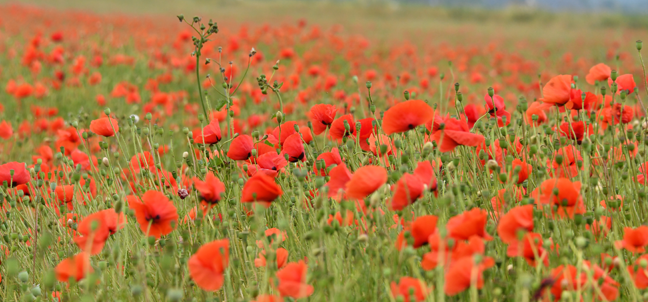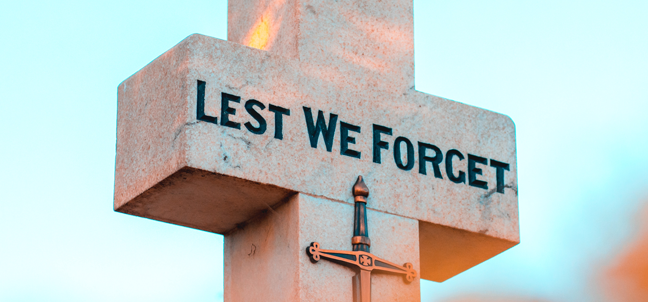How did the poppy become the face of peace that it is today, and who were the people who got it there? These are some of the questions we’ll be answering in this article. The efforts of a select few not only created a new icon for memorialising those who fell, but subsequently raised millions to help veterans across the world.
It all begins with Canadian doctor John McCrae. He was a physician working in Ontario with a military history: his father was part of the Canadian armed forces, while John himself served in the Second Boer War. At the onset of World War I he volunteered to fight, eschewing a role in the medical corps in favour of being a gunner.
Lieutenant Colonel John McCrae saw combat in northwest Belgium with the Canadian Expeditionary Force in 1915. He helped hold the line for seventeen days straight in the Second Battle of Ypres, a gruelling fight that helped the British and French get a foothold in the continent. In and around that small Belgian town the fighting was constant and brutal; it was the first time chemical weapons were deployed in warfare. German forces used chlorine gas against entrenched French positions close to the Canadian line.

One of the tens of thousands of casualties was Alex Helmer, a close friend of John. It was during his burial service that John observed how the poppies grew around the graves of the dead – bright bursts of red contrasting the churned earth and debris that war left behind. The next day, he penned the poem that would go on to be synonymous with remembrance: In Flanders Fields, named after the region of Belgium that Ypres is situated:
In Flanders fields the poppies blow
Between the crosses, row on row,
That mark our place; and in the sky
The larks, still bravely singing, fly
Scarce heard amid the guns below.
We are the Dead. Short days ago
We lived, felt dawn, saw sunset glow,
Loved and were loved, and now we lie,
In Flanders fields.
Take up our quarrel with the foe:
To you from failing hands we throw
The torch; be yours to hold it high.
If ye break faith with us who die
We shall not sleep, though poppies grow
In Flanders fields.
After its publication in December 1915, In Flanders Fields immediately resonated with both soldiers and civilians. It was translated and spread around the world, finding its way to then-teacher Moina Michael. During the war, she helped American tourists trapped in Italy return home after war broke out. In 1918 she was so moved after reading the poem she wrote a response to it, titled We Shall Keep the Faith.
Two days before the end of the war, Moina was thanked and paid for her work during the YMCA Overseas War Secretaries' conference in New York. She was paid $10 by the delegates, which she used to immediately buy 25 silk poppies; she kept one for herself and handed out the others to the delegates. This began her pursual of having the poppy officially recognise as a symbol of remembrance.

In the preceding years, Moina successfully put her case forward and the National American Legion to embrace the poppy. At the 1920 conference where this was announced, a fellow teacher and humanitarian was in attendance: Madame E. Guérin. During the war she was lecturing in America, but spent a large amount of time fundraising for French widows, orphans and veterans. At the conference Madame Guérin address everyone about an “Inter-Allied Poppy Day,” supported by the French Government.
Guérin would continue to tour the commonwealth nations and America building support for the appeal. During her visit to the U.K. she met with Field Marshall Douglas Haig, one of the founders of the Royal British Legion. He was easily sold on the idea, and poppy-sellers were on the streets that autumn raising money. The first UK appeal in 1921 raised over £106,000 (about £5 million today) after completely selling out of poppies.
Today, the Royal British Legion is the face of the poppy appeal in Great Britain, with 40,000 volunteers across the country collecting donations. On average they raise around £50 million a year - £1 for every second since the First World War – to help care for veterans and their families’ physical and mental wellbeing.
In the end, both Moina Michael and Madame Guérin were successful in their goals: the poppy was adopted internationally and funds from their sale were used to support those personally affect by war. And all of this from one soldier’s humble poem, about a battlefield and the flowers that bloomed through the mire of war.